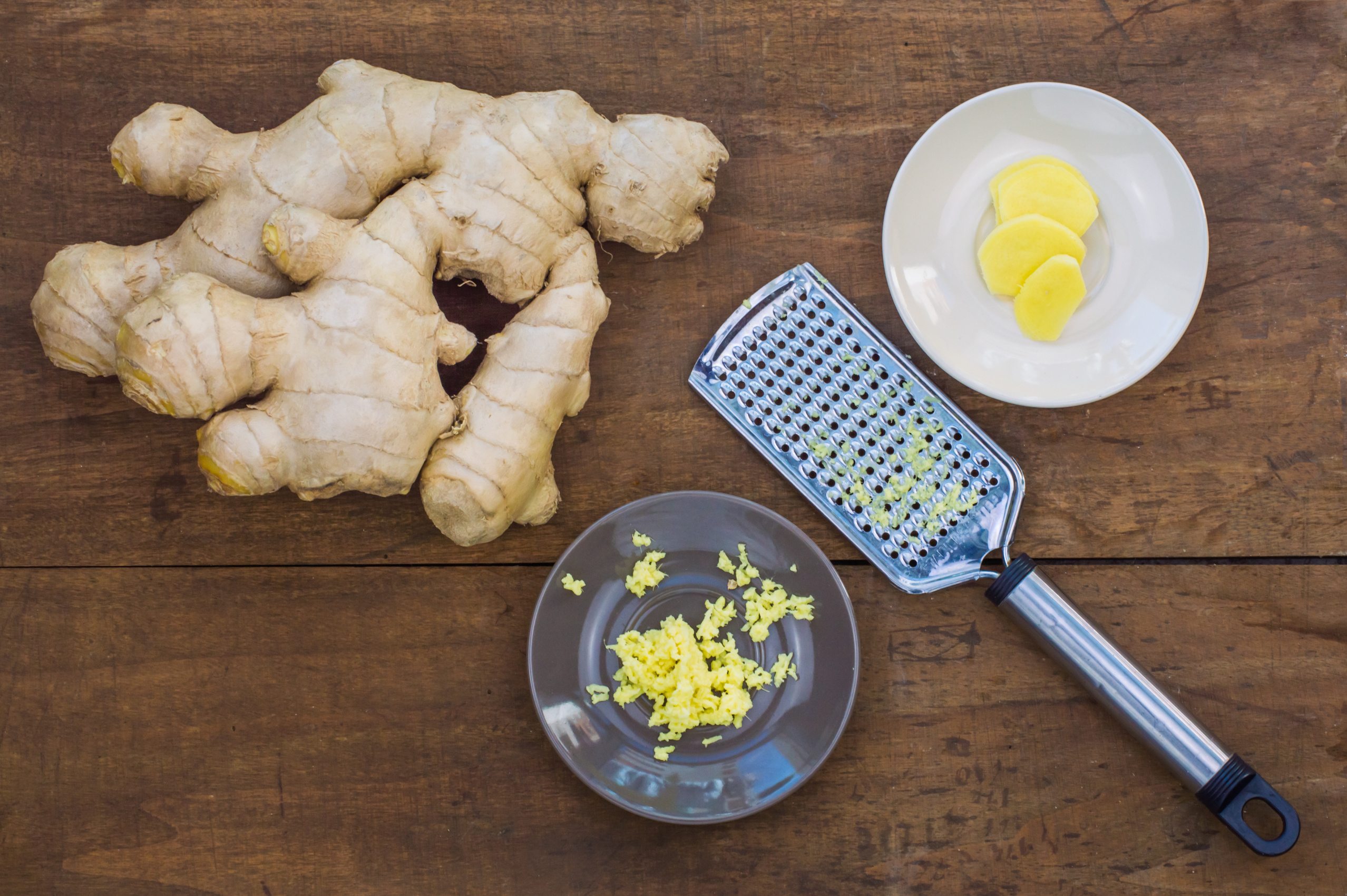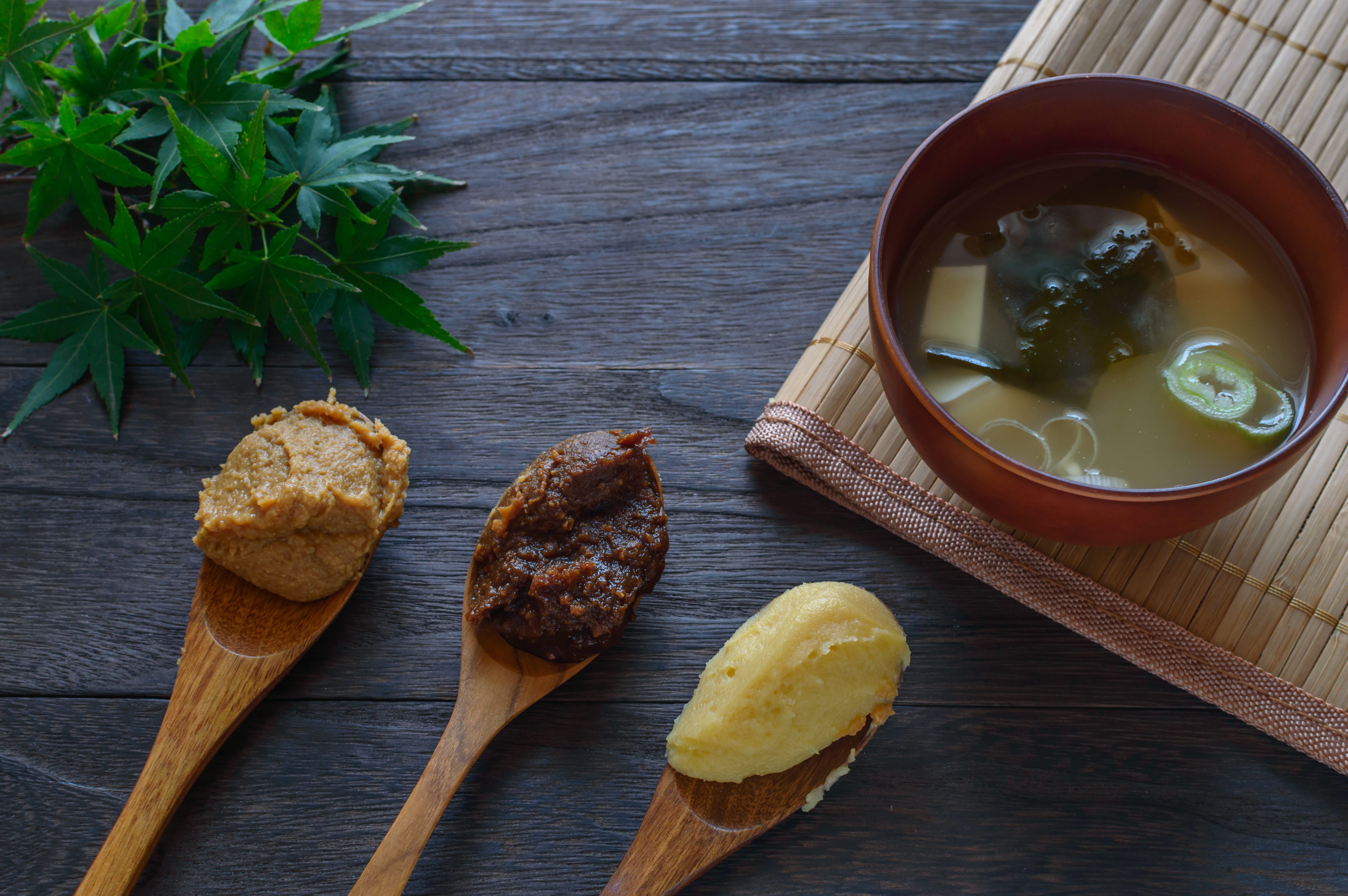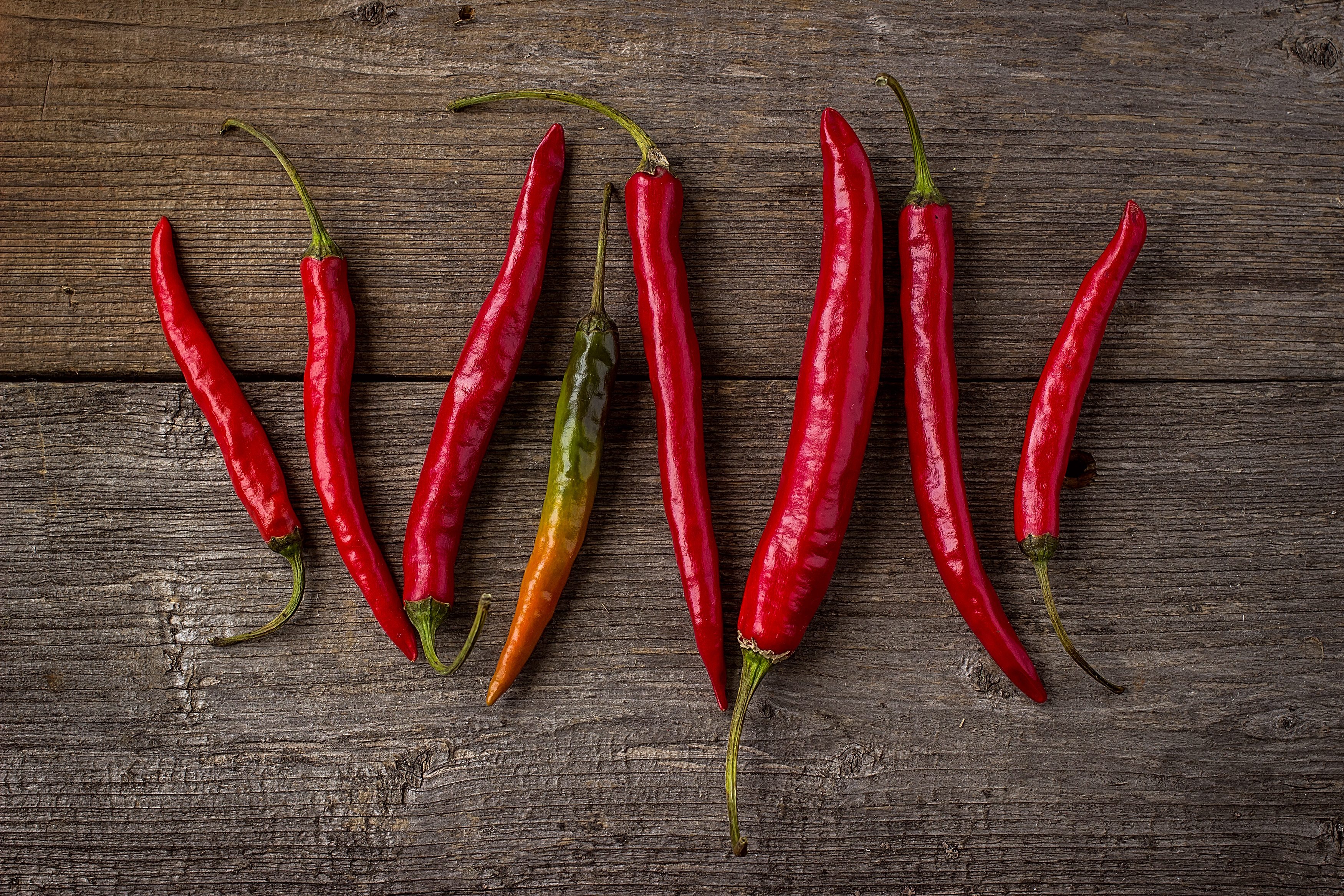The new year has many of us scaling back on our eating habits and resetting our diets to focus on healthier, simpler foods that have fewer calories. But “better for you” doesn’t have to mean bland. Small additions can make a big impact when it comes to boosting the flavor and texture of healthier foods. A twist of citrus, a handful of fresh herbs, a splash of broth, a bit of crunch and a dash of heat are sometimes all it takes to turn simple food into something exciting. The bottom line is this: Delicious food doesn’t have to come at the cost of hundreds of calories. Here are 10 ways to perk up your food with little to no calories at all.

CITRUS
Add zing to your cooking routine with fresh citrus. Lemon and lime juices are the usual go-to choices for adding a splash of bright flavor to fish, sautéed greens, roasted vegetables and crisp salads, but don’t dismiss the oranges, tangerines and grapefruits, which add sunny notes, too. Skip the bottled salad dressings — which are often loaded with salt and sugar — and make your own. Start with a quick citrus vinaigrette: Whisk 1 part citrus juice with 3 parts oil, and drizzle over dark leafy greens to boost your daily vegetable intake. Even better? Stir fresh citrus into yogurt or oatmeal for a bright start to your day.
You can mellow the flavor of tart lemons, limes, and grapefruit by cooking them — simply slice the whole fruit and either roast directly on the pan with your meat and veggies, or place on the grill for a minute or two until charred. Citrus juice and zest add big flavor to marinades with no extra sodium or calories. Looking to hydrate more? A spritz of fresh citrus does wonders for that glass of water.
Tip: A little zest goes a long way and can overpower your dish very quickly. Too much can make your food bitter. Start with just a small amount, then add a little at a time until you reach your desired flavor. Use a fine grater or Microplane for best results.

CELERY
Celery is so much more than just a diet-friendly vehicle for dip. Its ability to boost flavor and add crunch is often underestimated in the kitchen. This virtually calorie-free vegetable is an essential part of the traditional mirepoix — the trio of aromatics consisting of celery, carrot and onion — which is used as the flavor base in many casseroles, soups and stews. Celery adds a bright pop of crunch and character to humble pastas and whole grains, and it lends a much-needed snap to creamy salads made from tuna, potatoes, chicken or hard-boiled eggs. For a tangy twist, try it pickled: Soak in vinegar with a dash of salt and sugar.
Thinly sliced celery can bring a pan of seared fish or scallops to life, and it adds an exciting layer of crunch to spinach and kale salads. It’s a virtually carb-free vessel for nut butters, chicken salad and hummus, and celery makes a tasty soup topper that is lighter and far brighter than crusty bread or croutons.
Tip: Don’t toss the leaves. These pack a huge punch of flavor, so add them to salads, sandwiches, pesto and pastas.

GARLIC
Garlic can be both delightful and overpowering in its raw form — a quick sauté in olive oil will mellow its pungency and lend a soft, herbal, earthy flavor to soups, stews and sautéed vegetables. Try smashing a whole clove and tossing it into boiling water with pasta or whole grains while they cook, or mix a bit of minced garlic into vinaigrette to help emulsify the oil and vinegar. Garlic can also be sprinkled with a bit of salt and crushed into a paste, which amplifies the flavor to infuse it wonderfully into sauces, soups, rubs, marinades and dips. And if you have the time, roasting a clove of garlic will completely transform it into a soft, creamy, almost caramelized flavor that is significantly milder than raw garlic, and it spreads like butter onto whole-grain bread (see below for instructions).
Tip: Skip the bottled minced garlic. It’s worth the extra five minutes to peel and chop a whole clove, which has a more vivid, fresher flavor than jarred.
Roasted garlic: Preheat oven to 400°F. Peel off the papery outer layer of a whole head of garlic. Trim about 1/4 inch off the top. Wrap the entire head in foil, and roast for 40–50 minutes, or until the center clove is tender when pierced with a knife. Cool slightly, then press on the bottom of the garlic head to remove cloves from their paper shells.

GINGER
Unlike the dried form — most often used in baking — fresh ginger is bright, vibrant and floral, adding a delightful, almost peppery-hot zing to both sweet and savory foods. Add to vinaigrettes for a nice, lively twist. Stir it into hot, wintry bisques like sweet potato, carrot and butternut squash or warm broth-based soups like chicken noodle. Top tender, flaky fish with paper-thin slices of fresh ginger, or marinate pork in minced ginger and soy sauce for a tasty twist on everyday pork. Don’t stop at savory; fresh ginger can be added to smoothies, fruit compotes, muffins, yogurt and fresh juices.
Tip: Use a Microplane to grate fresh ginger — it will also peel the skin away from the root.

FRESH HERBS
The possibilities are endless with fresh herbs! A handful of fresh mint, thyme, basil or tarragon can do wonders for simple dishes. Don’t make the mistake of swapping fresh for dried, as fresh herbs are dramatically lighter and brighter than the dried varieties. Try tossing tarragon’s mild anise flavor into chicken salads, over fresh tomatoes or into creamy soups. Basil and mint are a bright, vibrant addition to fresh fruit, avocado toast, crisp-tender vegetables and whole grains; they also take plain smoothies and simple salads above and beyond. Sauté fresh thyme in olive oil before adding fish, chicken or even scrambled eggs for an elegant twist; sprinkle tougher herbs like rosemary and thyme over vegetables and meat before roasting or pan-searing.
Tip: Don’t just use the leaves. Herb stalks (from tender herbs like mint, cilantro, basil or parsley) contain loads of flavor, and they make tasty additions to pesto, sauces, soups, stews and even smoothies.

STOCK
Soups are a given when it comes to cooking with stock, but the possibilities extend far beyond a simple bowl of chicken noodle. Stocks add richness, depth, color and flavor to your cooking for nearly zero calories. Use them to boil rice and whole grains, which soak up most of their cooking liquid, infusing them with flavor. Drizzle lean chicken, shrimp or fish with stock throughout the cooking process to keep them from drying out. Use a rich stock in place of cream in mashed potatoes or cauliflower for a lower-calorie (but still creamy) side; sub half the cream or milk in heavy sauces with a stock to lighten. Steam vegetables in stock rather than water for a noticeable flavor boost.
Tip: Most supermarkets carry a variety of stocks — vegetable, chicken, beef, mushroom and seafood — but be sure to check the amount of sodium. Boxed varieties tend to have a lot of salt. Buy unsalted, or make your own from scratch.

NUTRITIONAL YEAST
Nutritional yeast is an inactive form of yeast — often the same strain bakers use to leaven bread (but the two taste completely different and are not interchangeable). This popular vegan staple is cheesy, nutty and packs in 3 grams of protein, loads of B vitamins and only 20 calories per tablespoon. Use it like you would Parmesan cheese (most vegans use nutritional yeast as a cheese substitute), for a fraction of the fat and calories. Bonus: It’s completely salt-free, but it packs a mighty umami-rich punch. Sprinkle “nootch” over salads, pastas, popcorn and roasted vegetables. You can stir a few tablespoons into vinaigrettes or pasta sauces to boost flavor and make for a thicker, creamier dressing. Use nutritional yeast to amp up sweet potatoes, kale chips, roasted cauliflower and even scrambled eggs.
Tip: Look for nutritional yeast in either the bulk section or spice aisle of health food stores or Whole Foods.

BALSAMIC VINEGAR
Balsamic vinegar is an acid (like all other vinegars and citrus juices) that is used in cooking to help perk up and brighten flavors. Popular for vinaigrettes, balsamic vinegar can do more than just dress a salad. It can jazz up a bland dish at the cost of zero calories, fat or sodium. Try adding a splash of balsamic vinegar to a beef stew or braise before serving for a bright, cheery finish. Use it to marinate tofu, fish or pork, or simply drizzle a bit over the finished dish. Whisk vinegar into lower-sodium marinades, ketchups and sauces for an immediate flavor boost.
A true Italian balsamic vinegar (labeled aceto balsamico tradizionale) is aged; it’s also sweeter, much thicker and very expensive, but it has a deeper flavor than what you’ll typically find in the supermarket. Supermarket balsamic vinegars are much cheaper but still pleasantly sweet and tangy, and they can also balance your food with brightness. You can reduce more basic balsamic vinegars in a saucepan until thick and syrupy for a more complex, concentrated flavor.
Tip: For cooking purposes, you can use a more budget-friendly balsamic vinegar, but for salad dressings and finishing dishes (think: drizzling over grilled veggies and fish or soup), it’s worth splurging on a nicer aged bottle.

MISO
This savory, nutty refrigerated paste is made from fermented soybeans and is rich in umami. Miso can be whisked into soups, sauces, marinades, dressings and dips. It varies in color from white and yellow to deep red. The darker in color the miso, the saltier and richer in flavor it becomes. One tablespoon contains anywhere from 400–600 mg sodium; be sure to limit added salt in any dish containing miso. Stir a spoonful into cooking water before adding whole grains, or combine with olive oil and brush or drizzle over fish, chicken or even vegetables before grilling or roasting. A tablespoon of miso adds tremendous depth to soup, either brothy or creamy varieties. Work miso paste into ground turkey or lean ground beef to pack a mighty punch into leaner grilled burgers. And, as with most of the other ingredients shared here, miso can take a simple oil-and-vinegar dressing to a whole new level.
Tip: Miso contains good-for-your-gut probiotics and will last for months in the refrigerator.

PEPPERS
From beautifully mild bells to intensely spicy habaneros, peppers of all varieties can be used to add a lot of crunch and a wide range of heat. Bell peppers have little to no heat; an entire pepper has less than 30 calories, and the red variety has nearly three times more vitamin C than an orange. Raw bell peppers are a great way to add a bright, refreshing crunch to salads, tacos and sandwiches. Or, try roasting them until charred, and remove the skin to reveal a mellow, buttery sweet flesh that is delicious in green salads, tossed into pastas or pureed into dips and sauces. Spice up chili, tacos, marinara and omelets with the hotter varieties like jalapeños, habaneros, chipotles and anchos — just be sure to add them in small amounts until the desired level of heat has been reached. Not all peppers are created equal, but a hit of heat can really enliven a simple dish. To mellow the heat, remove the seeds and veins before adding hot peppers to your food.
Tip: Don’t have fresh peppers on hand? Try adding a dash or two of hot sauce to wake up that soup!




